A new-look course with Tom Doak’s fingerprints all over it is just one of the many reasons you need to tick the world-class Mornington Peninsula off your travel list.
For as long as I can remember, golfers in the know have been extolling the virtues of Victoria’s Mornington Peninsula – some even labelling it the best golf destination in Australia. It’s a bold statement but one that’s difficult to argue against. I fell head over heels for the place during a golf-filled week in early 2003 that saw me cramming in nine rounds in just four days that sun-drenched February. It was a whistle-stop tour that gave me the opportunity to gorge myself on the best golf menu we have. Amazingly, the Mornington today is an even better proposition than it was then. In early 2003, St Andrews Beach was yet to open and Moonah Links still had just one course.
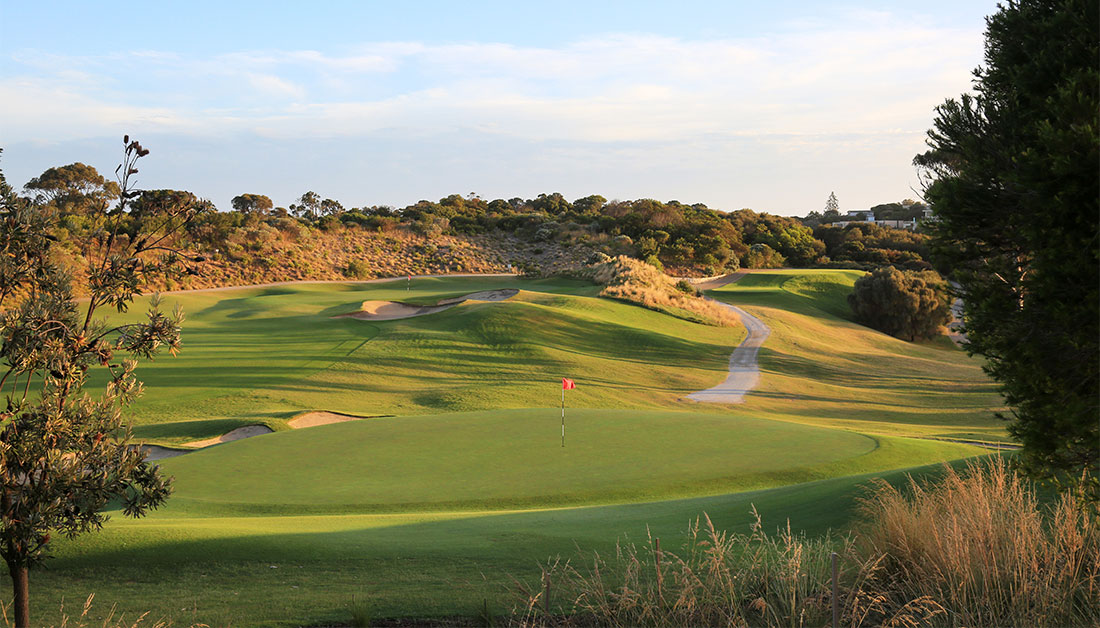
While the bulk of the activity on the boot-shaped tract of land south of Melbourne took place during the years either side of the turn of the millennium, the Mornington has remained a hub of commotion in recent times. Portsea Golf Club re-routed and partially redesigned its course half-a-dozen years ago to accommodate a new clubhouse (including a boutique hotel) located in the centre of the site rather than its northern edge. Nearby Sorrento Golf Club upgraded its greens and bunkers as well as renovating its clubhouse. The RACV built an enormous, 204-room resort that stands like a monolith over parts of the refreshed Cape Schanck golf course. The Dunes tweaked two holes and built a new green for another.
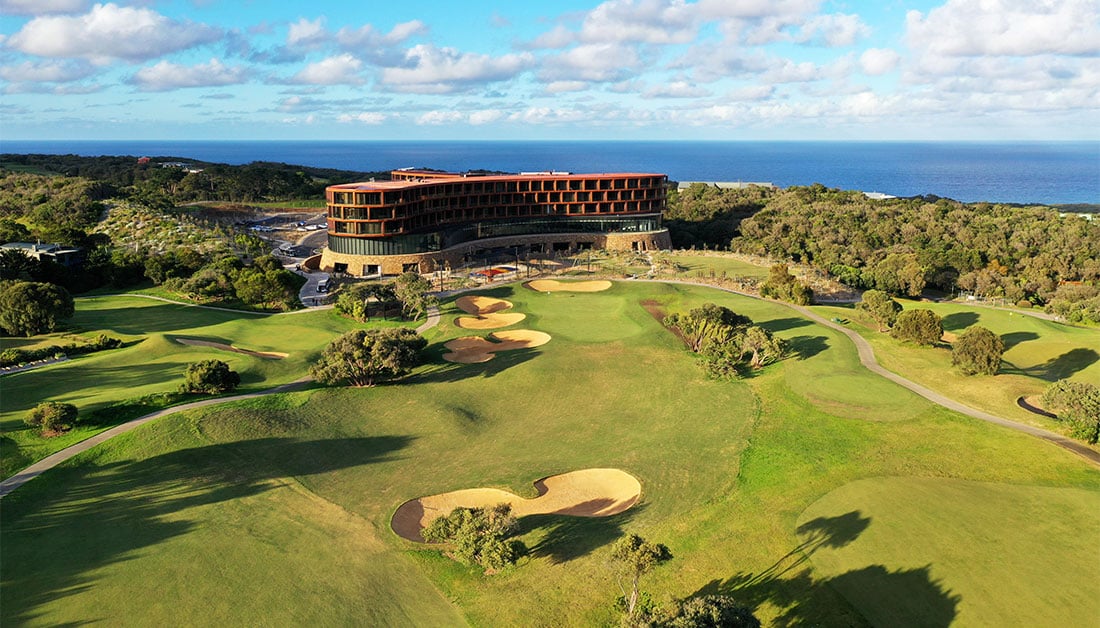
Yet the granddaddy of all the changes from a golf architecture standpoint might just be this month’s unveiling of the redesigned Ocean course at The National Golf Club. Tom Doak, who gave the Mornington one of Australia’s premier public-access layouts in St Andrews Beach, stepped in to reinvigorate the course nearest to Bass Strait. Running parallel to and built concurrently alongside the Moonah course in 2000, the Thomson, Wolveridge, Perrett collaboration tired faster than its siblings. While an excellent layout (the Ocean always ranked inside the top 40 or 50 courses in the country), it was long viewed as the distinct No.3 within the trio.
Doak’s primary focus was on the putting surfaces. All 18 greens have either been completely reshaped or built in new locations to make use of natural hollows and the contours of the land.
“Currently many of the greens have been pushed into difficult locations, to achieve course length, where they have had to be shaped into artificial levels to fight the natural grade, with the resultant issues being exacerbated by the windy conditions at Cape Schanck,” Doak wrote in his submission to The National. “[Our] green complexes will have increased options for approach shots including along the ground, using surrounding contours, aerial and playing safe near the green with the potential of getting up and down for par.”
Our green complexes will have increased options for approach shots including along the ground, using surrounding contours – Tom Doak
The revised version also makes far better use of its waterside location – you can actually see the ocean now from what was a somewhat erroneously named Ocean course – although being a brand new layout, it will now be known as the Gunnamatta course after the neighbouring beach of the same name. It is most definitely a new course. Sixteen of the holes (all except the first and last) were re-routed to at least some degree even if several fairways occupy the same playing corridors as before. The new design changes direction more frequently with several holes pointing directly at Bass Strait in what are sure to be stern challenges.
The result is a course that’s more user-friendly without diluting the test, offering up the promised artistic contouring so savvy golfers of all abilities can use the shapes to their advantage with just an ounce of imagination. There are now fewer bunkers but a focus on appropriate positioning for the ones that remain and large, flowing teeing grounds that allow for far greater set-up flexibility than individual tee pads. Early reports from member preview rounds (the Gunnamatta course doesn’t officially open until November 3) indicate near-universal satisfaction with the outcome.
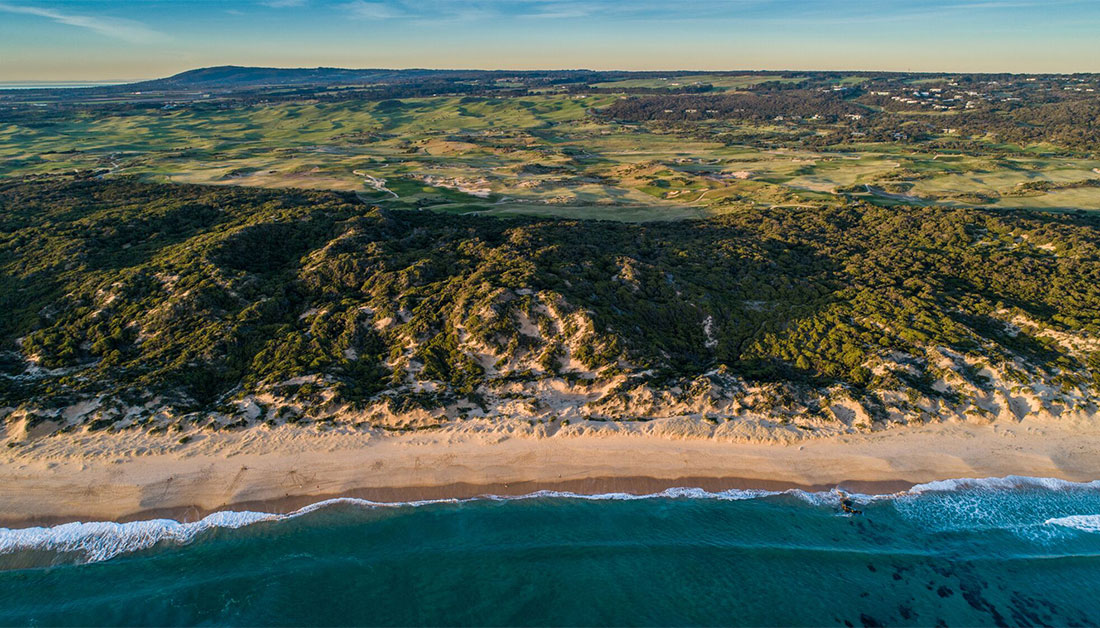
The Gunnamatta’s rejuvenation adds yet another string to the Mornington’s bow – though it was not like it needed one. How good are the golf offerings on the peninsula? Nine of Australian Golf Digest’s Top 100 Courses reside in those 723 square kilometres, and that’s not including The National’s Long Island course or the two Peninsula Kingswood courses – both of which are set to return in the 2020 ranking after highly applauded redesigns – in a standalone destination that enjoys quasi-Mornington status. Nor does it take in the delightful layouts at Rosebud, Flinders, Devilbend, Mornington Golf Club and more. The area has been a golf haven for the past 20-plus years but might be at its most appealing right now.
Power To The People
Despite The National’s trio of courses there, officially Moonah Links’ twin layouts offer the largest truly publicly accessible golf realm on the peninsula. Known for being conceived as the ‘Home of Australian Golf’ and the pair of Australian Opens it held in 2003 and 2005, Peter Thomson’s Open course is the aggressive big brother of the two: ready to pound and punish anyone looking for a fight. Ross Perrett’s Legends course is the younger sibling that more than holds its own. Together, they make a compelling pairing with options for golfers seeking a brawny challenge or a more playable 18. Which isn’t to say the Legends lacks venom or that the Open is impossible. Indeed, the Open course is perfectly playable from the white tees or farther forward, while the carefully positioned hazards of the Legends require considerable nous to successfully navigate.
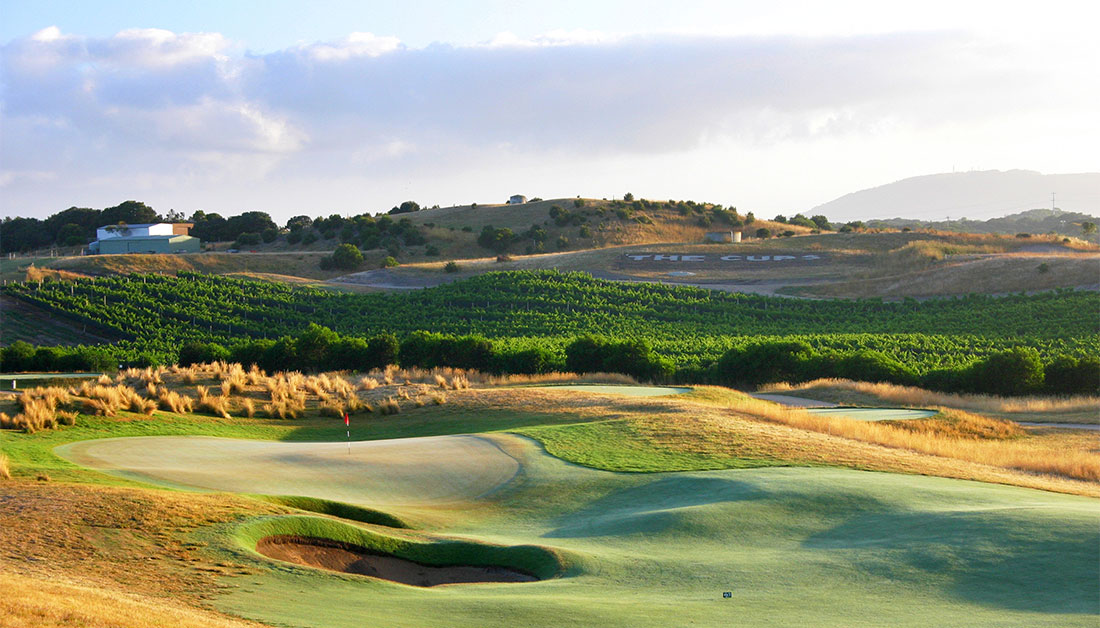
Yet the contrast is a large part of the appeal. Unfolding across largely uncluttered but undulating ground, the Open course shows off multiple holes in any given panorama. Holes on the Legends, meanwhile, weave through secluded valleys and rippled corridors accentuated by large, blowout traps and waste bunkers in comparison to the array of pot bunkers dotting the Open layout. Whether you tackle both in one hit or make use of the Peppers resort for an overnight stay, there’s no need to exit Moonah Links without sparring with both pugilists for at least a couple of rounds.
Around the corner, 15 holes at The Dunes Golf Links, so long a favourite of visitors to the peninsula, remain largely untouched from the day it opened in 1997. Of the other three, the 15th and 16th holes were redesigned earlier this decade to make use of a newly acquired piece of land. That switched them from a par 5-then-4 combo to 4-5 and these days the pair look very much like an established part of the property. More recently, the club built a new green on the ninth hole, straightening what was a dogleg left into a hole where the green is now visible from the tee. The new target is bunkerless and features a cheeky little bowl in the front right corner that makes pins cut in that portion an intriguing proposition. The former green now takes on a new life as a more-than-handy chipping and short-game practice area.
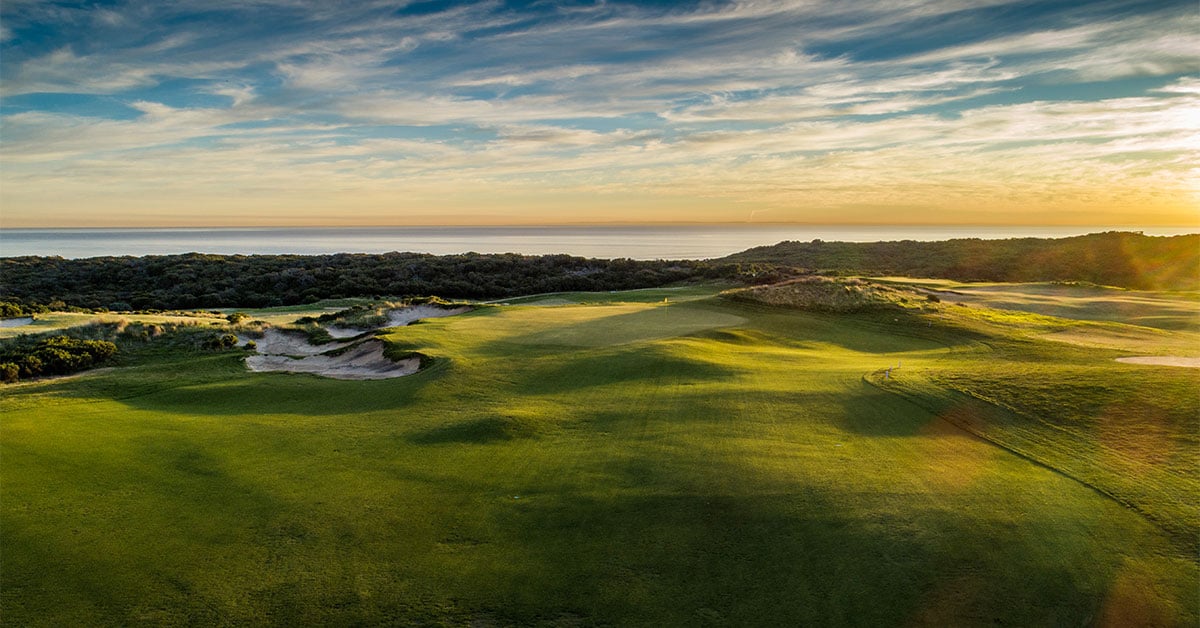
When you reach the 12th hole, take a moment to consider that Jason Day birdied the snaking par 5 all four times the year he won the prestigious Dunes Medal with a 12-under par tally for 72 holes. In fact, the club likes to joke how Day has won two Majors: his 2015 PGA Championship title and the Dunes Medal a decade earlier. The 21st edition of the Dunes Medal will take place from November 26-29, with Melbourne’s Blake Collyer attempting to three-peat one of the highlights on the local amateur calendar.
In the same neighbourhood, St Andrews Beach is a perennial must-play and the first solo design Doak gave our fair land. Deceptively short by scorecard assessment alone, the attractive and strategic layout mixes length with short, smart holes and broad playing corridors with occasionally wild shaping – but all in keeping with the rolling landforms of the perfect-for-golf region known as ‘The Cups’. Intended to be a 36-hole project at conception, golfers still need to quench their appetites with just the original 18 at St Andrews Beach, although that’s plenty given the phalanx of enticing options nearby.
If you’re a fan of The National’s Old course but either can’t secure a tee-time or don’t want to part with the green fee, a junior version is right next door at RACV Cape Schanck. Also designed by Robert Trent Jones Jnr, Cape Schanck is a shorter, toned-down version of the Old but is no less pleasant to play. The contouring is familiar yet is perhaps not as extreme in most instances. There are moments, though. Stand on the tee of the short seventh hole and the water-carry par 3 to a multi-terraced green is all any golfer can handle. One hole earlier, the spacious sixth green is narrow but deep enough to vary by as many as five clubs from front to back. The refreshed version of the course – completed midway through 2018 – has it in peak shape and should definitely find a home on any Mornington Peninsula golf itinerary.
As if Victoria wasn’t blessed enough with the world-class Melbourne Sandbelt, a short drive from the city is another high-calibre golf playground. It’s a powerful pairing that should have any traveller salivating. What a time to be a golfer.
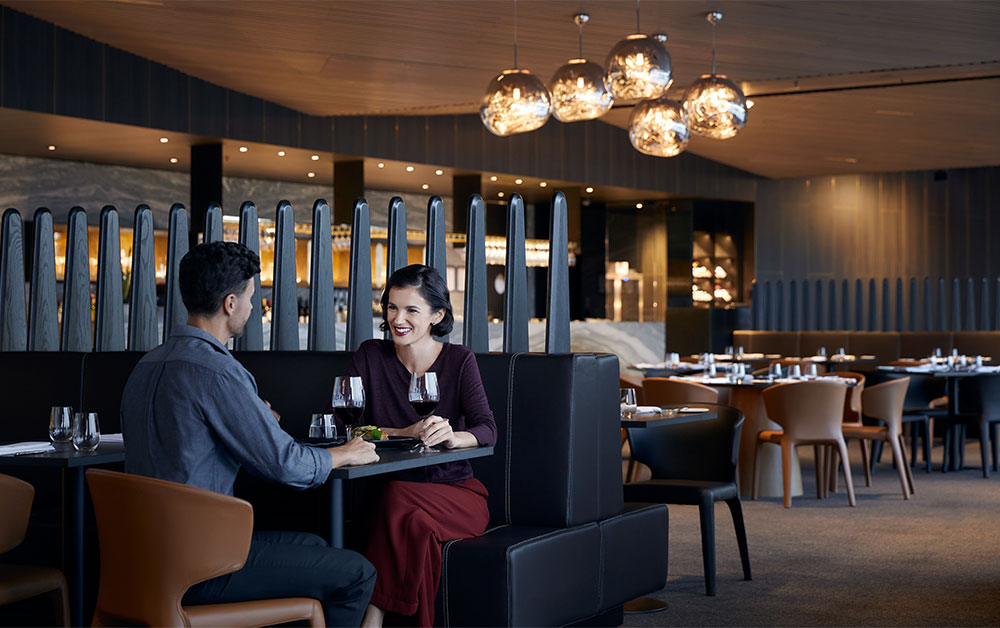
Where To Eat Drink And Stay
The Mornington Peninsula is blessed with a vast spread of top-echelon golf courses, but it also has accommodation, restaurants and wineries to match. Here are 16 of the best.
Five great places to stay
• Jackalope: Included in Jackalope’s luxurious ‘lairs’ are daily food and beverage services with a selection of pinot and cheese, oysters and champagne or martinis and caviar (jackalopehotels.com)
• Lindenderry at Red Hill: Recognised as one of Australia’s best and most romantic regional hotels by Luxury Travel Magazine, the 40 elegantly designed and spacious guest rooms are as much an escape as the region itself (lancemore.com.au/lindenderry-red-hill)
• Polperro Farmhouse: Nestled in lush Victorian landscape at Red Hill, Polperro is a celebration of the iconic Australian 1950s holiday home. The three-bedroom farmhouse for guests has been newly renovated, with a focus on social living at its core (polperrowines.com.au/farmhouse-accommodation)
• RACV Cape Schanck Resort: The five-star coastal retreat includes a luxury spa, magnificent golf course and locally sourced food and wine at the resort’s restaurants (racv.com.au)
• Flinders Hotel: Quiet seclusion, absolute style – ‘Quarters’ is where the best of international luxury design meets the Mornington Peninsula’s charm (flindershotel.com.au)
Five great places to drink
• Willow Creek at Jackalope: Planted in 1989, the 11-hectare Willow Creek Vineyard has taken root in deep volcanic soils, known for producing rich flavours. The cool-climate vineyard produces pinot noir, chardonnay, cabernet, pinot gris and sauvignon blanc (jackalopehotels.com)
• Port Phillip Estate: The Mornington Peninsula is one of Australia’s foremost cool-climate maritime wine regions, and Port Phillip Estate is a specialist chardonnay, pinot gris and pinot noir producer (portphillipestate.com.au)
• Polperro Winery: Polperro’s focus is towards increased vineyard health, using a mix of organic and biodynamic principles. It’s a considered approach celebrating individual vineyard character using a mix of traditional and modern practices that ensure minimal intervention and sustainability (polperrowines.com.au)
• Ten Minutes by Tractor: Cute name, even cuter wines. The winery started in 1997 with three family-owned vineyards, all ten minutes by tractor apart. Each vineyard has a unique character with different aspects, slopes, soils, altitude and cool ocean breezes (tenminutesbytractor.com.au)
• Montalto: Montalto’s aim is to create wines of exemplary quality and character, utilising winemaking techniques that complement the unique qualities derived from their vineyards, in a style that reflects each vineyard site (montalto.com.au)
Six great places to eat
• Paringa Estate: In 2019, Paringa Estate confirmed its position as one of the premier food and wine destinations in the region when the restaurant was awarded two Chef Hats in The Age’s Good Food Guide (paringaestate.com.au)
• Laura at Point Leo Estate: Culinary director Phil Wood designed Laura’s set menu, his elegant and thoughtful dishes conveying the unique region. The intimate and peaceful space invites guest to take their time and enjoy the vista across Western Port Bay framed by some of the estate’s most notable sculptures (ptleoestate.com.au/laura)
• Many Little: Not just a place to eat sustainably grown local produce, and not just an intimate spot to celebrate with top-quality Australian and international wine. It’s not just good company, a friendly greeting, or even an exceptional chef and his team. Many Little Bar & Bistro is all these things (manylittle.com.au)
• Red Gum BBQ: Australian-smoked, American-style barbecue. Using all the traditional methods of cooking southern barbecue at low heat for many hours, pitmaster Martin uses the woods native to the area to delicately flavour the meat (redgumbbq.com.au)
• La Campagna: The vineyard and olive grove combine the beauty and bounty of the Mornington Peninsula with rustic Tuscan charm. The traditional Italian cuisine and cellar door make for a powerful combo (la-campagna.com.au)
• St Andrews Beach Brewery: Walking distance from the golf course of the same name, St Andrews Beach Brewery is an ideal post-golf place to relax and enjoy a variety of small plates, share plates, salads, pizzas and burgers designed to go hand-in-hand with the brewery’s range of craft beers (standrewsbeachbrewery.com.au)
For more information on a Golfing Great head to Visit Victoria.

